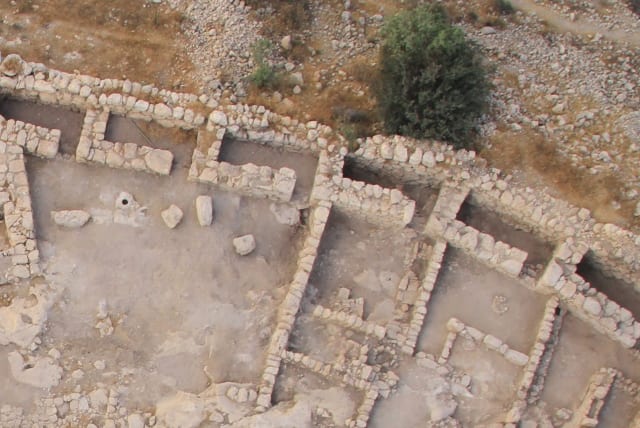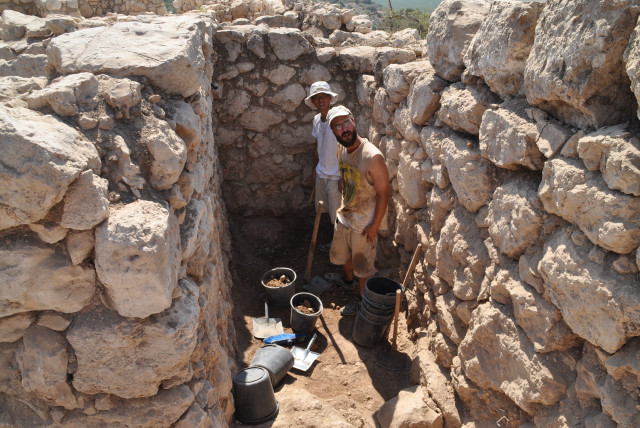Biblical Kingdom of Judah expanded into Israel earlier than previously thought, study finds

In this comprehensive study, Prof. Yosef Garfinkel examines the earliest fortified sites in the kingdom of Judah during the 10th century BCE.
Contrary to previous beliefs that the expansion of the Kingdom of Judah took place only in the late 9th or 8th century BCE, 200 to 300 hundred years after King David, a new Hebrew University of Jerusalem (HU) study shows that it had already begun to spread into the hill country and the northern Shefela (lowlands) as early as the 10th century BCE. The expansion of southern Shefela followed about two generations later in the time of David’s grandson Rehoboam.
HU’s Institute of Archaeology has just published an article entitled “Early City Planning in the Kingdom of Judah: Khirbet Qeiyafa, Beth Shemesh 4, Tell en-Naṣbeh, Khirbet ed-Dawwara, and Lachish V” by Prof. Yosef Garfinkel in the institute’s publication, The Jerusalem Journal of Archaeology.
Fortified sites across Israel provide insight into Jewish past
In this comprehensive study, Prof. Yosef Garfinkel examines the earliest fortified sites in the kingdom of Judah during the 10th century BCE.
The five sites reveal significant insights into the urbanization process, urban planning, and borders of the earliest phase of the Kingdom of Judah, The Shefela region located southwest of Jerusalem, played a crucial role in the Kingdom of Judah’s expansion due to its favorable ecological conditions for agriculture, the team said, because its low, rolling topography, fertile soil and enough rain make it the kingdom’s breadbasket that could feed a large population.
The study stressed the importance of the kingdom’s expansion into the Shefela and its agricultural resources as a key stage in its development.
Regarding the publication date of the research, Garfinkel explained that “the evidence was known before; it isn’t a matter of new discoveries. What was needed was someone to come along and observe the complete picture that these findings portray. I am glad that I was able to fulfill that role.”
The excavations that formed the basis of these conclusions were conducted by Saar Ganor from the Israel Antiquities Authority and Prof. Michael Hazel from the Southern Adventist University in Tennessee.
The five sites showcase an urban plan characterized by a casemate city wall (a double wall with the space between the walls separated into chambers that could be filled up to better withstand battering rams in case of siege).
They noted that Lachish, Level V, has a similar pattern but without casemates in its city wall. The findings have far-reaching implications for understanding the urban planning and territorial boundaries of the earliest phase of the Kingdom of Judah, they commented.
Three things were common to all these cities – they were fortified with a casemate city wall and were located on the kingdom border and on a main road leading into the kingdom. Khirbet Qeiyafa in the Elah Valley protected the southwest border of the kingdom. “Beth Shemesh” in the Soreq Valley protected the western border of the kingdom. Tell en-Naṣbeh near Ramallah protected the north and Khirbet ed-Dawwara protected the northeast border.
“The urban plan is clearly recognized in the sites of Khirbet Qeiyafa, Tell en-Naṣbeh, Khirbet ed-Dawwara and Beth Shemesh. Recently, excavations at Lachish, Level V, uncovered a similar pattern comprising a peripheral belt of structures abutting the city wall. This city wall was solid with no casemates.
Radiometric dating techniques confirm that the fortified cities of Khirbet Qeiyafa and Beth Shemesh date back to the first quarter of the 10th century BCE, the time of King David. The analysis of the urban planning and the geographical location of the sites clearly indicates that it was a strong kingdom able to build well-planned cities on its borders and protect the main roads leading into its capital Jerusalem.
“The discovery of a barrier wall in this area effectively defines the boundaries of the urban core of the Kingdom of David, putting an end to the longstanding historical debate surrounding the existence of the Kingdom and its borders,” Garfinkel declared, adding that “this finding provides tangible evidence on the ground and dated to the relevant period supporting the biblical accounts of Rehoboam’s expansion and fortification as described in the Book of Chronicles. It is a rare instance where we can present empirical historical and archaeological evidence aligning with biblical narratives from the 10th century BCE.”
Jerusalem Post Store
`; document.getElementById("linkPremium").innerHTML = cont; var divWithLink = document.getElementById("premium-link"); if (divWithLink !== null && divWithLink !== 'undefined') { divWithLink.style.border = "solid 1px #cb0f3e"; divWithLink.style.textAlign = "center"; divWithLink.style.marginBottom = "15px"; divWithLink.style.marginTop = "15px"; divWithLink.style.width = "100%"; divWithLink.style.backgroundColor = "#122952"; divWithLink.style.color = "#ffffff"; divWithLink.style.lineHeight = "1.5"; } } (function (v, i) { });

